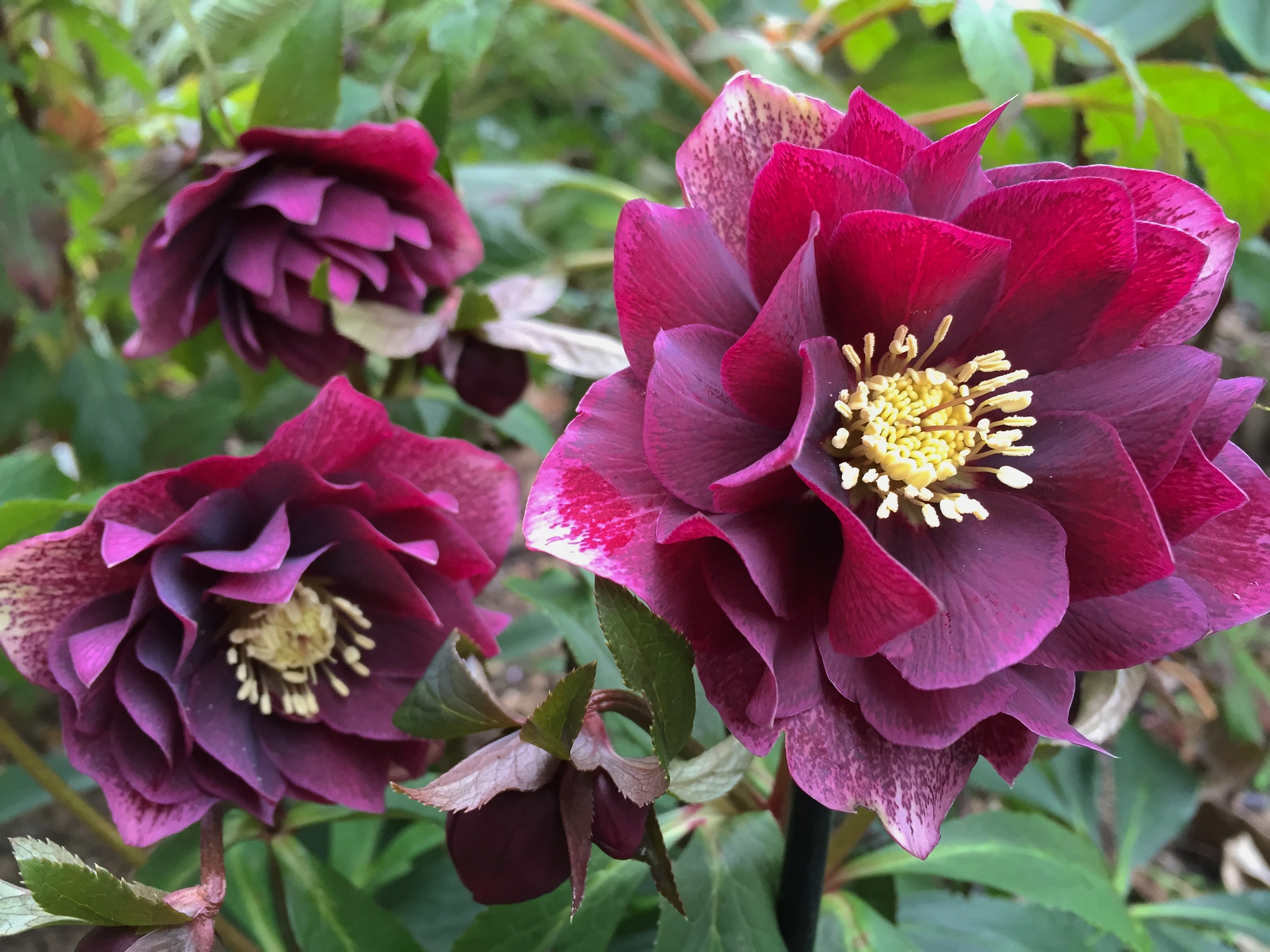- © 2025 Annapolis Home Magazine
- All Rights Reserved

Helleborus hybridus Double Ellen Red
Winter need not be a season of discontent for the gardener. The ground may be covered with snow, but below a tree or along a frosty border, these bell-shaped blooms shine forth as harbingers of hope. Hellebores, called Lenten Rose or Christmas Rose, bloom in late December and early January and last through May. These shy beauties, once limited to a narrow color palette, have undergone a revolution in recent years. Advances in propagation through division, tissue culture, and hand-pollination are producing diverse flower colors, forms, patterns, and larger blooms. With more than 50 varieties, including double flowering hybrids, they are sure to revive the heart on the dreariest day.
Hellebores grow primarily in Europe in open meadows in Bosnia, Croatia, Slovenia, Turkey, Greece, Italy, and China. They were originally grown in gardens for their medicinal properties. Filled with alkaloid toxins, they have been used both as a poison and a purgative. It is precisely because of this toxicity that they are prized as “deer-resistant”, which is especially useful for landscapes in the Annapolis area.
There is much to know about the shy hellebore. It is an ancient plant, believed to be used medicinally since before the appearance of Christ. In Greek mythology, the physician Melampus used hellebore to cure the daughters of Proetus, king of Argos, after they had been cursed with madness by the god Dionysus. In return, Melampus was given one of the princesses as his bride. Black hellebore is still used by homeopaths to treat depression. Folklore tells that a specimen was found growing in an English abbey believed to have been established by St Thomas, one of the 12 Apostles, and every year it bloomed regularly on 6 January.
Besides its history and mythology, there is another good reason to add hellebores to your garden—they are drought tolerant and easy. Plant your hellebore in partial shade in a rich, highly organic well-drained soil. Amend as needed with organic fertilizer. In the right spot, this low-growing beauty spreads very quickly. Happily, it propagates itself by throwing off seeds.
Plant hellebores on a hillside or in raised flower beds to better enjoy their downward facing blooms. (The downward facing blooms ensure snow will not damage them.)
When transplanting hellebores directly from their nursery containers, be sure to shake off the potting mix and free up any bound roots.
Be careful not to plant your hellebore too deeply; it will inhibit flower growth. It is best if the crown of the plant is just below the soil.
Annapolis Home Magazine
Vol. 10, No. 1 2019